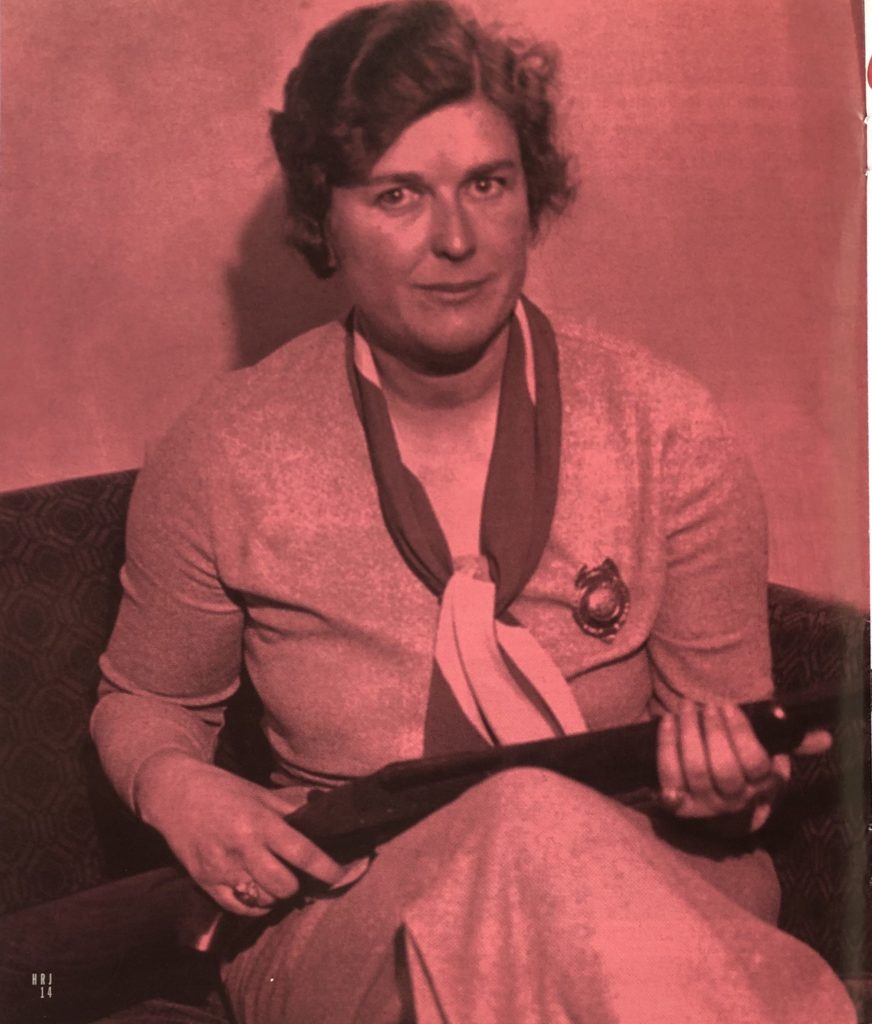
center: A hunting party, 1933; right: a fly-fishing publicity shot. State Archives, Connecticut State Library
By Mark Jones with Nancy O. Albert
(c) Connecticut Explored Inc. SUMMER 2006
Subscribe/Buy the Issue
On January 24, 1934, the Hartford Daily Courant carried a story about the first female game warden in the United States, Connecticut’s own Edith A. Stoehr. [She may not have, in fact, been the first.] She was the only woman, the story noted, to be attending the Twentieth Annual Game Conference that year in New York.
The Connecticut Board of Fisheries and Game had hired Stoehr in the spring of 1933 to patrol the state’s newly established women-only fishing preserve after she won a fly-casting contest on the Branford River in North Branford. After almost a year, Warden Stoehr told the Courant that she loved her job because “it’s getting paid for something you love to do.” She had powers of arrest and carried a gun. So far, she had hauled off two men to local courts for violations. “It shocked some for them to have me come trudging up in my hunting clothes—boots, riding breeches, and hunting jacket, and ask for their license. Some of them said, ‘Gosh, what’s the world coming to anyhow?’ but they all very courteously displayed their [hunting]certificates.”
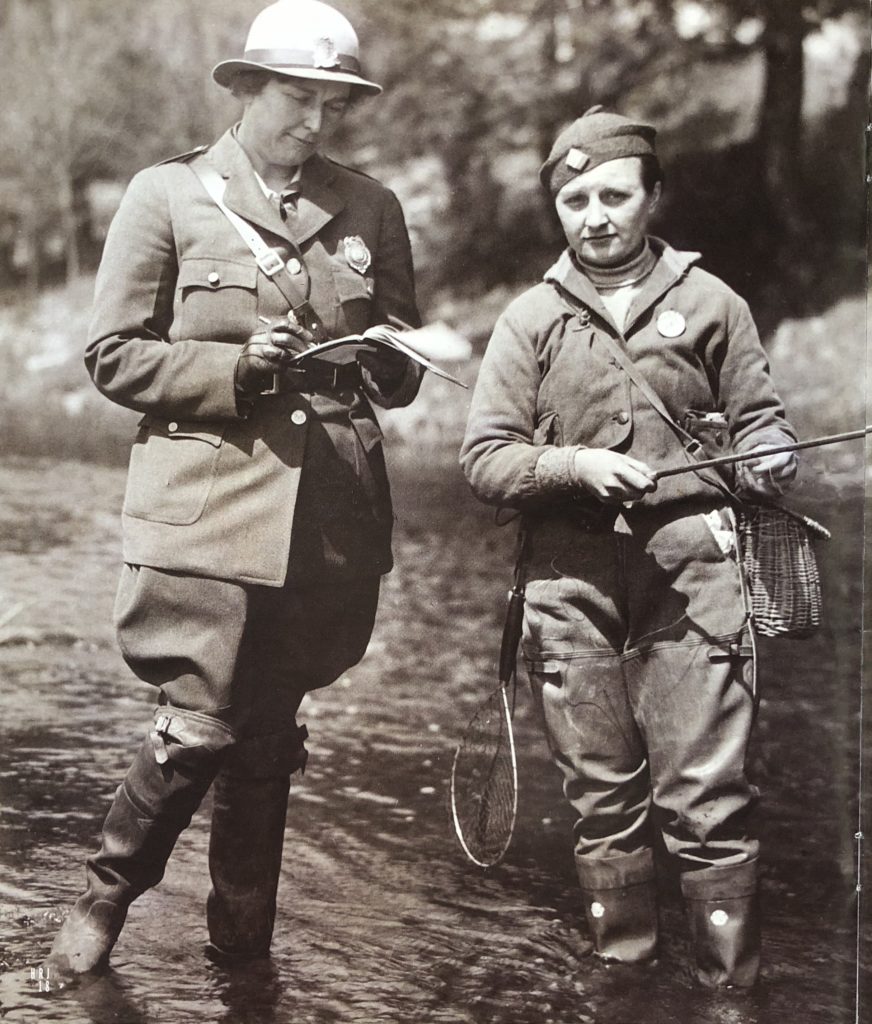
(l) Warden Edith Stoehr teaching an unidentified student fly-casting and trout fishing at the Branford River Women’s Fishing Reserve, c. 1935. State Archives, Connecticut State Library
Indeed, one might ask, what in the world was happening to the male bastions of hunting and fishing in Connecticut?
The Board of Fisheries and Game oversaw the enforcement of fish and game laws and stocked fish and game around the state. In 1932 the Board voted to lease five miles of the Branford River in North Branford for the exclusive use of women, making it, as the Courant declared, “an exclusively feminine trout stream.” Only fly-casting would be allowed. The Board’s annual report noted that “this action is believed to be in line with modern tendencies, and the constantly increasing interest of women in all forms of sport.” In 1940, seven years after the program’s beginning, a Board official wrote:
Connecticut has always had a large number of women who were interested in fishing and a small group interested in hunting, and in recent years the number of real enthusiasts has increased tremendously. Many of these women have acquired fine hunting dogs, guns, fishing tackle and other accessories necessary to enjoy these sports on a par with the men.
In fact, officials “soon realized” that “many of these women possessed skill equal to that of the men, and from this thought was born the ambitious program” of setting aside not only the trout stream in Branford but also a hunting preserve in Farmington, which was a small section of a larger public hunting grounds.
Who was Edith Stoehr? She was born in 1906 and grew up in Hartford. She did not graduate from high school and learned about the outdoors from her father, Henry W. Stoehr. Writing to an inquirer in 1946, Stoehr said that she had been “fond of hunting and fishing since [as]a very small child [I] went with my father whenever he would allow me to tag along with him.” Father and daughter ran a kennel in South Wethersfield on Mills Street raising setters and pointers. She was devoted to her calling, writing that her “work is also a hobby, because I love everything about the work, the out-of-doors, dogs, fishing and hunting.”
After her appointment as game warden, Stoehr gained some celebrity through interviews with radio stations, newspapers, and magazines. Still, it took the fisheries and game board ten years to make her job as deputy warden a permanent position so that she could collect a pension.
Stoehr, who never married, died of a “short illness,” according to her obituary, at Hartford Hospital on March 6, 1946 at age 40. She had served as warden for 13 years. In addition to local newspapers, the New York Times carried her obituary, complete with a photograph. At her funeral, her fellow game wardens served as pallbearers. After her death, her position was not refilled. Today, though there are no longer preserves exclusively for women, five of the state’s 50 environmental conservation police are women, and conservation organizations hold workshops that introduce women to the outdoors.
Mark Jones is archivist for the State of Connecticut, a frequent contributor to HRJ, and a member of its editorial team. Nancy O. Albert served as HRJ’s photo editor from the magazine’s inception to December 2005.
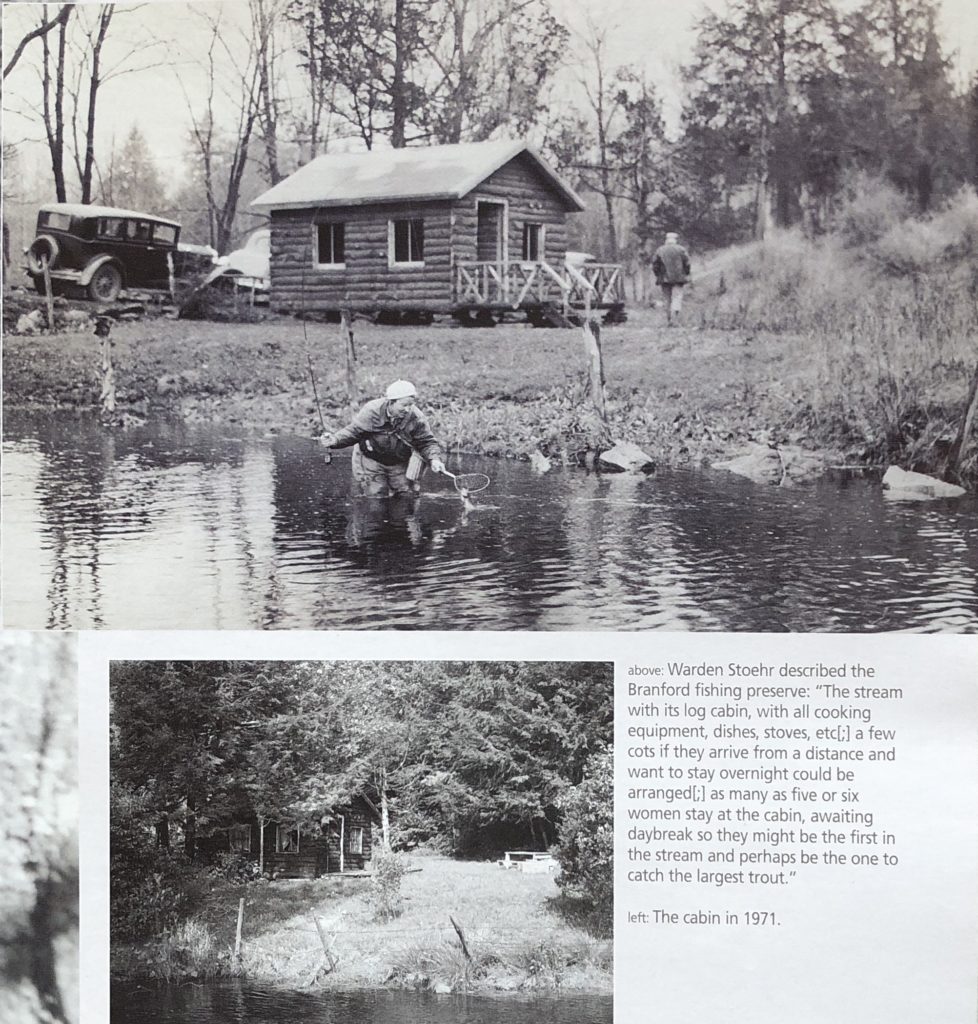
top: Stoehr, Branford Fishing Reserve, bottom: the fishing reserve’s cabin, 1971. State Archives, Connecticut State Library
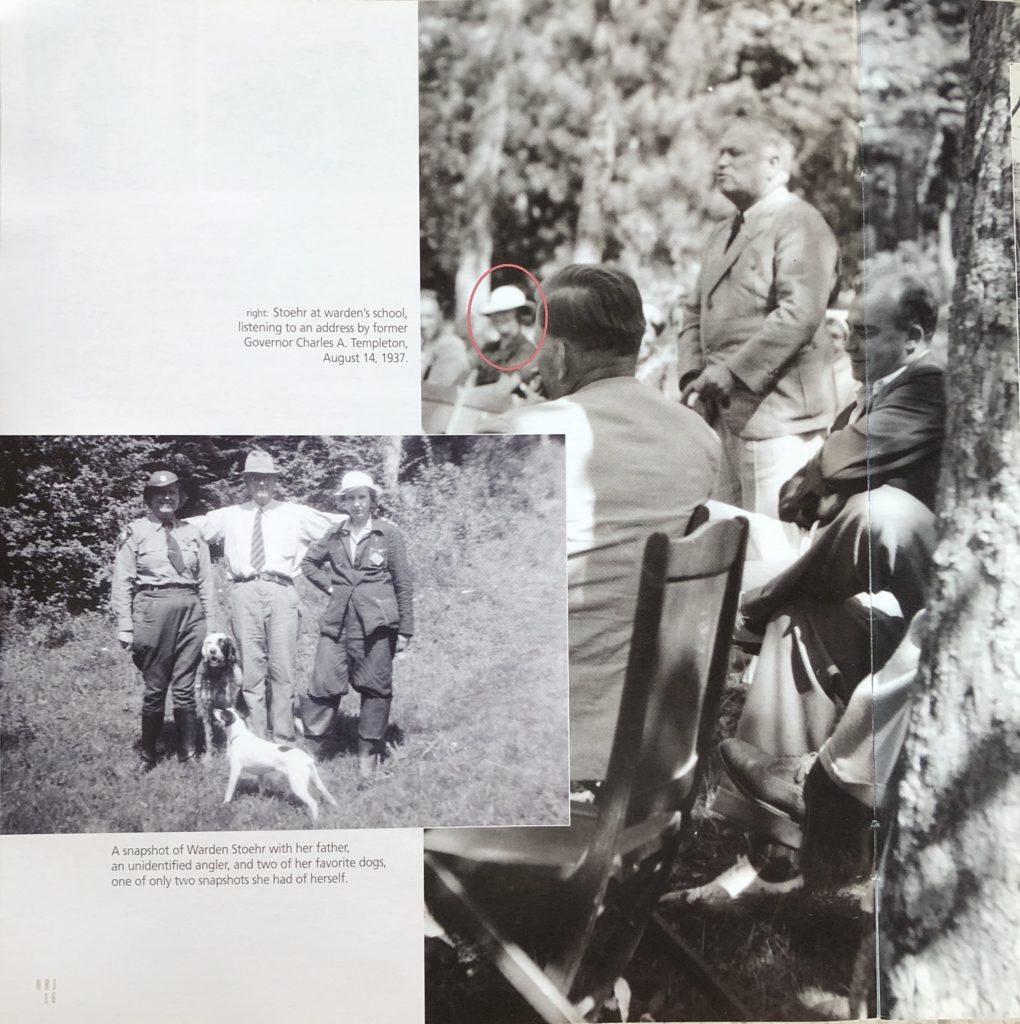
left: Edith Stoehr with her father, an unidentified angler, and two of her favorite dogs, one of only two snapshots she had of herself. right: Stoehr at warden’s school, listening to an address by former governor Charles Templeton, August 14, 1937. State Archives, Connecticut State Library
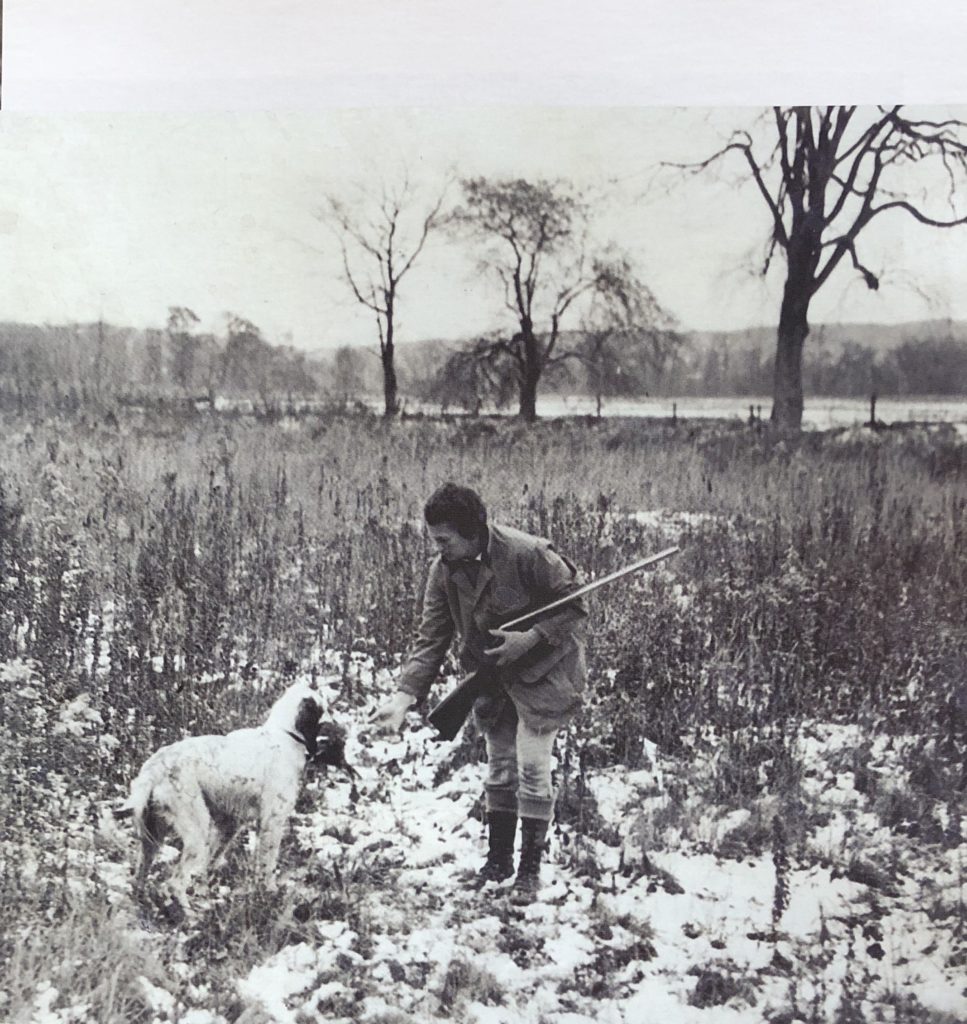
Mrs. Russell Fenn of New Haven hunting at the Women’s Hunting Grounds in Farmington, 1933. A Hartford Courant story (November 12, 1933) noted that her dog “Doc” had retrieved a pheasant. State Archives, Connecticut State Library
Explore!
Read more stories about the Connecticut Landscape & Environment on our TOPICS page.

